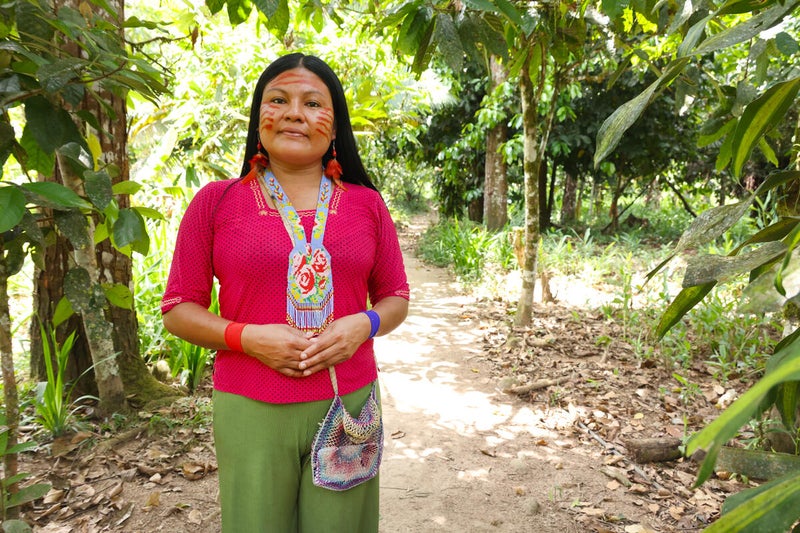This post was authored by Santiago Garcia, Indigenous Peoples and Local Communities Partnerships Manager for Natural Climate Solutions at Environmental Defense Fund.

Santiago Garcia (right) with Tuntiak Katan (Vice Coordinator at COICA) in Ecuador. Source: Leslie Von Pless, EDF.
This week, representatives of 190 nations, including 90 heads of state, began gathering at COP27 in Sharm el-Sheikh, Egypt, to discuss and negotiate solutions for our warming planet.
As important as these movers and shakers are, there’s another esteemed group of climate ambassadors who also deserve a seat at the international climate table: the Indigenous Peoples who’ve stewarded our tropical forests for generations.
Tropical forests are vital to our existence.
For hundreds of millions of years forests have pulled carbon from the atmosphere and stored it in their leaves, limbs and trunks, enriching the soil beneath and fomenting the growth of diverse flora and fauna. As human civilizations evolved, these forests have provided them with food, medicines, clean water and air, and opportunities for thriving livelihoods.
But tropical forests are disappearing at an alarming rate. More than half of tropical forests have been lost since the 1960s. Just last year, in 2021, more than 11 million hectares of tropical forest cover was lost – an area almost the size of Virginia.
The science is clear. To stabilize the climate and meet the UN’s climate goals, we need to halt tropical deforestation in the next decade before it’s too late. The Amazon is quickly approaching a tipping point in which the rainforest will be transformed into savanna, with severe consequences for Earth’s climate and human societies.
Defenders of the forests
Indigenous Peoples are on the front lines to conserve the world’s tropical forests. They have used their knowledge, skills and abilities to be the forests’ guardians. For Indigenous groups, forests represent a cultural repository where values, norms, beliefs and institutions are transmitted for generations, increasing their resilience and ability to adapt to changes.

Lourdes Jipa is active in CONFENIAE and is the first female leader in her community. Source: Leslie Von Pless, EDF.
Research shows that Indigenous approaches to forest conservation maintain the most thriving forests on Earth. For instance, a recent study on the Amazon shows that deforestation rates on securely held Indigenous land are 50% lower than in areas outside of Indigenous territories. In recent years, numerous international organizations have issued additional research and reports demonstrating the critical role that Indigenous Peoples and Local Communities play in land conservation.
But they can’t do it alone; they can’t do it without funding; and they can’t do it without a voice in decisions, nationally, regionally and internationally.
The world community – especially the leaders of international organizations, governments, corporations, and civil society – would be wise to listen to and learn from Indigenous Peoples. They have stories to tell and insights to offer. Let’s follow their lead.
As we move forward from COP27, we must accelerate actions to conserve and restore tropical forests – and we must do this in collaboration with Indigenous Peoples.
Environmental Defense Fund is developing a storytelling series, “For the Forest, For the Future”, in which Indigenous storytellers show us how their communities harness nature to fight climate change and environmental degradation. Watch the first two videos from the series below:









